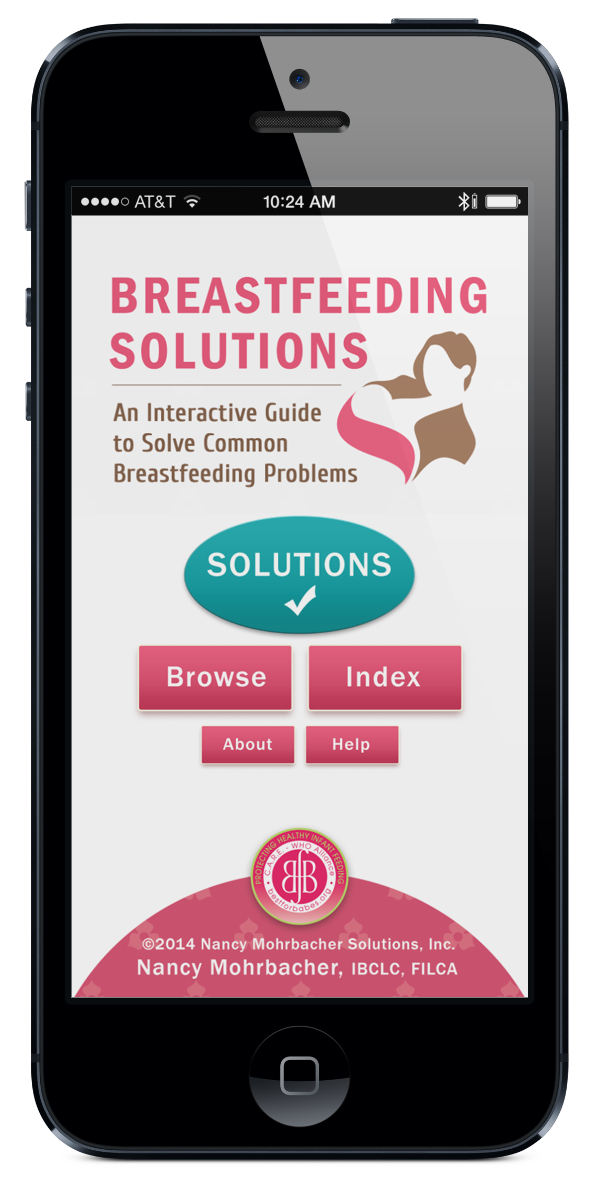By Marsha Walker, RN, IBCLC and Danielle Rigg, JD, CLC
 Breastfeeding is not an experiment, but a near sure-thing when a mother’s and baby’s bodies are given frequent and early opportunities to “plug-in” to each other to do their thing.Yes, we said “near sure-thing” because 95% of breastfeeding problems can be avoided and only a small percentage of women don’t have the ability to make enough milk for their children (and if that’s you, read “Yes You CAN Breastfeed Successfully, No Matter How Much Milk You Make“). So, despite the abundance of myths and misinformation out there about what works and what doesn’t work with breastfeeding, there are actually clinically and scientifically proven “how-to’s” about nursing.
Breastfeeding is not an experiment, but a near sure-thing when a mother’s and baby’s bodies are given frequent and early opportunities to “plug-in” to each other to do their thing.Yes, we said “near sure-thing” because 95% of breastfeeding problems can be avoided and only a small percentage of women don’t have the ability to make enough milk for their children (and if that’s you, read “Yes You CAN Breastfeed Successfully, No Matter How Much Milk You Make“). So, despite the abundance of myths and misinformation out there about what works and what doesn’t work with breastfeeding, there are actually clinically and scientifically proven “how-to’s” about nursing.
This all makes perfect sense when you understand two things about nature’s design: 1) you and your baby are wired to make and receive milk; and 2) optimal health for both of you depends upon continued interdependence after birth. That is why breastfeeding is often referred to as the “10th Month” or “4th Trimester”! Your body and your baby’s body are connected in a mutual exchange of physiologic processes that complete the cycle that pregnancy began, continuing to grow your baby and ensure your and your baby’s future health. For example, your baby’s suckling will shrink your uterus back to it’s pre-pregnancy size and help keep your spirits up, helping your body heal, slim down and avoid postpartum depression. At the same time, your colostrum and, later, milk, literally completes the lining of his/her gut and jump-starts his/her immune system by depositing critical antibodies and infection-fighters. Amazing stuff, right? (For more amazing facts about what breastfeeding does for you and your baby, see Your Mom-Made Wonder Food - Dazzling and Amazing Benefits)
Top 10 Tips for Your Best Breastfeeding Game:
1. Skin-to-Skin is In: Place your baby skin-to-skin on your chest right after he/she is born aiming to have the first breastfeeding occur within the first hour or so after birth. (Read: Did you Get Your “Magical Hour”?) Skin-to-skin contact awakens your baby’s feeding instinct-babies born without medical intervention (epidurals, pitocin, etc.) can even crawl up your belly to latch him/herself! (If you had medical interventions, it may take a little longer, but as long as baby is healthy, it is worth a try!) Even if you end up with a c-section, the baby can be placed across your upper chest while surgery is completed so the baby gets skin-to-skin contact and is motivated to nurse. Ask that your baby remain with you during recovery.
2. Feed on your baby’s cue: at least 8-10 times each 24 hours
3. Learn your baby’s feeding cues: Nurse when you see these, especially if he/she is very sleepy from labor medications or an early (before 40 weeks) birth. Hunger cues are:
- Rapid eye movements under the eyelids
- Hand-to-mouth-movements
- Sucking movements of the mouth and tongue
- Body movements and small sounds
Basically, hunger in a newborn is anything other than “deep sleep” or “quiet alert” states. So, if your babe starts acting squirmy even with shut eyes, pick him/her up and try to nurse!
4. Keep your baby with you during the hospital stay: Babies who are sent to the nursery tend to breastfeed less often – which is not good for your baby or for your milk production. And, you won’t be able to detect early hunger cues if your baby is not with you! Staff nurses usually don’t have the time to pay that close attention to every baby. This is called “rooming in.” Believe it or not, you’ll probably sleep better, because you will be less anxious about the baby-and hearing your breathing and being near you calms your baby, too.
5. Don’t Schedule Feedings: Feeding every 2 to 3 hours, or on a set schedule is NOT recommended as you may miss opportunities when your babe is available and motivated to eat. Some babies go longer stretches, then “cluster feed” where they nurse frequently in the space of an hour (not surprisingly, it seems to happen to a lot of moms during the early evening when their milk supply is lowest, and when many babies go through their “witching hour.”)
6. Get the Lactation Specialist involved: seek out the hospital lactation consultant —she/he should be an IBCLC—Internationally Board Certified Lactation Consultant—or bring names of independent lactation specialists with you to the hospital, to help you make sure you are getting a good latch. The IBCLC should observe an entire feeding and be able to tell you whether the issue is simply a latch that needs to be corrected or otherwise. Make sure your lactation specialist is not an imposter!
7. Get a Good Latch: Make sure your baby is latched correctly (corner of mouth open 160 degrees), and is really swallowing colostrum. You can tell if (s)he is swallowing by listening for the swallow, by seeing his/her jaw drop and hold for a fraction of a second, if the areola moves towards the baby’s mouth with each suck, if you hear a puff of air from the nose, or if you hear a “ca” sound after each suck. If you cannot tell whether the baby is swallowing ask to see the lactation specialist to confirm swallowing. There are great latching videos available at Dr. Jack Newman.
8. Breastfeed your baby at night: Colostrum acts as a laxative and the more colostrum he/she receives the faster meconium (the first tarry black bowel movement) will be eliminated. Meconium is a reservoir for bilirubin and needs to be eliminated quickly.
9. Know all your options: If your baby does not latch to the breast or latches but swallows little colostrum, you have other options besides formula and the lactation specialist should go over these with you: you can hand express colostrum into a spoon and spoon feed this to your baby about once an hour during the day (Hoover 1998), you can pump and spoon feed (less preferable to hand expressing); The best hospitals also have a stash of screened, pasteurized, donated breastmilk on hand which is far preferable to supplementing with formula. Another good technique is to massage and compress each breast at each feeding during pauses in the baby’s sucking to increase the amount of colostrum/milk he/she receives during each feeding. This is called alternate massage and helps the baby initiate and sustain sucking (Bowles et al, 1987). See Dr. Jack Newman for techniques.
10. Finally, get plenty of rest. This is not the time to be the super hostess of the century, this is the time to let other people take care of you. If you have a hard time asking people for help, think of it as good practice! Although it’s been shown that women can breastfeed under extreme duress, during emergencies, and during periods of prolonged hunger, too much stress over time can cause you to produce less milk, and make you think you are incapable of breastfeeding. It then becomes a vicious cycle; the more you worry about not making enough milk the more stressed you get, the less milk you make. So turn off and try to get extra rest to boost your milk supply, and even if the laundry and undone dishes are driving you crazy remember this period of time won’t last forever, and soon you will be back to a routine . . . never the same as it was before baby 1, 2, 3 or more, but a routine nonetheless.




